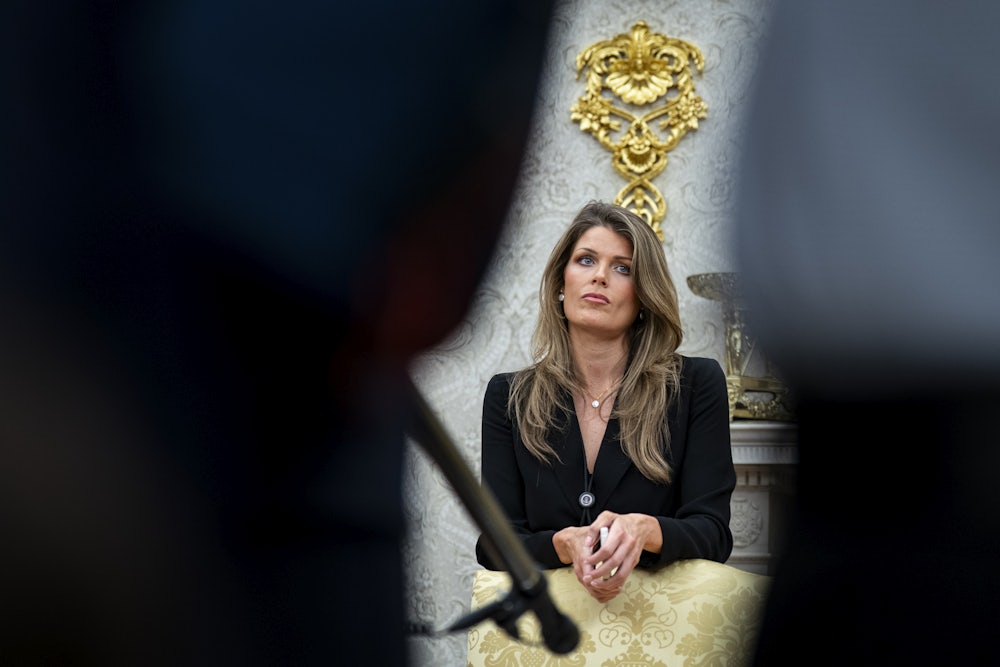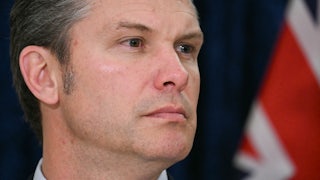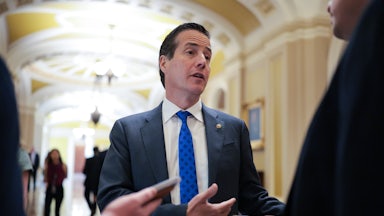Two days ago on my Talking Feds Substack, I wrote that Monday of this week was Lindsey Halligan’s worst day to date—which was already saying something—and that it pointed to far worse ones still to come. I could not have anticipated that the first of those far worse days would arrive quite so soon—yesterday, to be precise.
I was in the northern Virginia courtroom Wednesday for the argument before Judge Michael Nachmanoff on former FBI Director James Comey’s motion to dismiss the case Halligan brought against him because it was a reprisal prosecution brought at President Trump’s command out of personal antagonism toward Comey.
As Halligan looked on from counsel table, one of her assistants, Tyler Lemons, tried his best to argue that whatever incendiary rhetoric Trump served up against Comey, the actual decision to indict was made by Halligan and the grand jury. In legal terms, the administration was opposing Comey’s motion by arguing that Trump’s obvious animus was not the cause of the indictment.
Nachmanoff pressed the government lawyer about how Halligan could have been the decision-maker when she came to the case only a few days before she sought the indictment.
It was in chasing down the implausible timeline that Nachmanoff cornered the government into conceding that the grand jury had not even reviewed the actual indictment in the case.
It was a gobsmacking, Perry Mason moment of the sort that doesn’t happen in actual hearings; except it did. The spectators emitted a kind of silent gasp while Judge Nachmanoff pursed his lips and remained silent for several seconds.
The bizarre and unprecedented chain of events happened because the grand jury declined to return the first of three charges in the government’s proposed indictment (and it approved charges two and three by reportedly very narrow margins). But instead of presenting to the grand jury a new indictment with the two approved counts—not only standard procedure but the only conceivable one—Halligan and her colleagues simply cut and pasted the original indictment, removing the first charge and renumbering the remaining two.
That’s how it came to pass that the grand jury did not even review the supposed operative indictment. Michael Dreeben, Comey’s counsel, was quick to argue that “there is no indictment” because the charging document now before the court was never seen by the full panel.
It’s hard to convey how consummately boneheaded it was to try to slip a revised indictment past the court rather than presenting it to the grand jury. Earlier in the week, Magistrate Judge Fitzpatrick had referred to the situation as “uncharted territory.”
As this all spilled out, Nachmanoff summoned Halligan to the podium to confirm that when the second indictment was presented, the full grand jury wasn’t in the courtroom. Halligan acknowledged it, and Nachmanoff curtly dismissed her.
The revelation changed the entire character of the hearing, adding a coda of total ridicule for Halligan. Halligan already had egg on her face for a series of blunders. This was more like an entire omelet.
Nachmanoff, who was exceptionally well prepared and even-tempered, may have been the only person in the courtroom who anticipated the possibility that the government had not presented the indictment to the grand jury at all. He was ready with a 1969 case, Gaither v. United States, from the D.C. Circuit—a case that did not present this particular set of facts (it’s not clear any case ever has) but was highly relevant in its emphasis on the grand jury’s independent constitutional role.
That case rejected the idea that similar irregularities were mere clerical errors and applied a test focused on the grand jury’s actual intention. If Nachmanoff applies that framework, there is at least a colorable argument that the grand jury, despite the comedy of errors, intended to green-light the two charges that appeared in the indictment it never actually saw.
But that alone wouldn’t rescue the government. Recall that Magistrate Judge William Fitzpatrick found no fewer than 11 instances of serious misconduct, justifying, among other things, the production to the Comey team of grand jury materials. This latest screw-up is yet another basis for disclosure: It goes directly to whether there was ever a valid grand jury vote on the actual charges.
The more important point is that at least two of these instances of misconduct look to present serious arguments for dismissal with prejudice, which would bring to a close the prosecution that I have called “the single most shameful act in the Department of Justice’s history.”
The government was required to file objections to the magistrate’s opinion by Wednesday at 5 p.m. It did so, with a flurry of demurrers arguing that even if the case has been one long skein of blunders, they were all small-bore and don’t require dismissal.
The first issue is the “vindictive prosecution” motion itself. Before the hearing lurched into the absurd, Dreeben was making significant headway persuading the court that Trump’s retribution commands were the “but-for cause” of the indictment—the standard the law prescribes. The government’s anemic response was that Halligan independently evaluated the case and that the grand jury’s vote broke the causal chain. In a fairly embarrassing formulation that landed flat, Lemons told the court that “Halligan was not a puppet.”
As Dreeben emphasized—and Lemons ultimately conceded—if Trump’s commands caused the prosecution, it would be a grave violation of the due process clause. It’s hard to see the court giving the government a second shot, particularly since any new indictment would now be time-barred: The five-year statute of limitations has expired.
Perhaps more seriously, the magistrate’s opinion outlined two fundamental misstatements of law that Halligan made to the grand jury, each in response to juror questions. The opinion redacted the statements but described them sufficiently to reveal more breathtaking prosecutorial malpractice.
Halligan mischaracterized Comey’s Fifth Amendment right to remain silent in a way that could have suggested to jurors that the burden of proof lay with him. And she told them that if the government’s evidence appeared thin, they need not worry—additional evidence would come out at trial.
In its filing yesterday, the government did little to dispute the facts, arguing instead that if Halligan misled the jury, dismissal would be inappropriate unless the court found prejudice. That may be true in the abstract, but nothing about these errors feels harmless: The misstatements were grave, fundamental, and, given the grand jury’s already narrow votes, plainly consequential.
And on this score, another malefactor surfaces: Attorney General Pam Bondi. DOJ filings assert that Bondi reviewed the grand jury proceedings and materials and, on that basis, ratified both the indictment and Halligan’s authority. If so, she necessarily signed off on the very misstatements Judge Fitzpatrick highlighted. Her willingness to act as a shill for Halligan implicates her directly in the ethical and constitutional violations.
In short, and remarkably, the case looks even more ill fated, bungled, and corrupt than it did two short days ago. And that’s without accounting for the separate motion to dismiss on the grounds that Halligan’s appointment was invalid. The judge in that matter has said she will rule within the week.
The case now seems to be in a kind of death spiral—so riddled with independently fatal flaws that the only real question is how, not whether, it will crash and burn.






